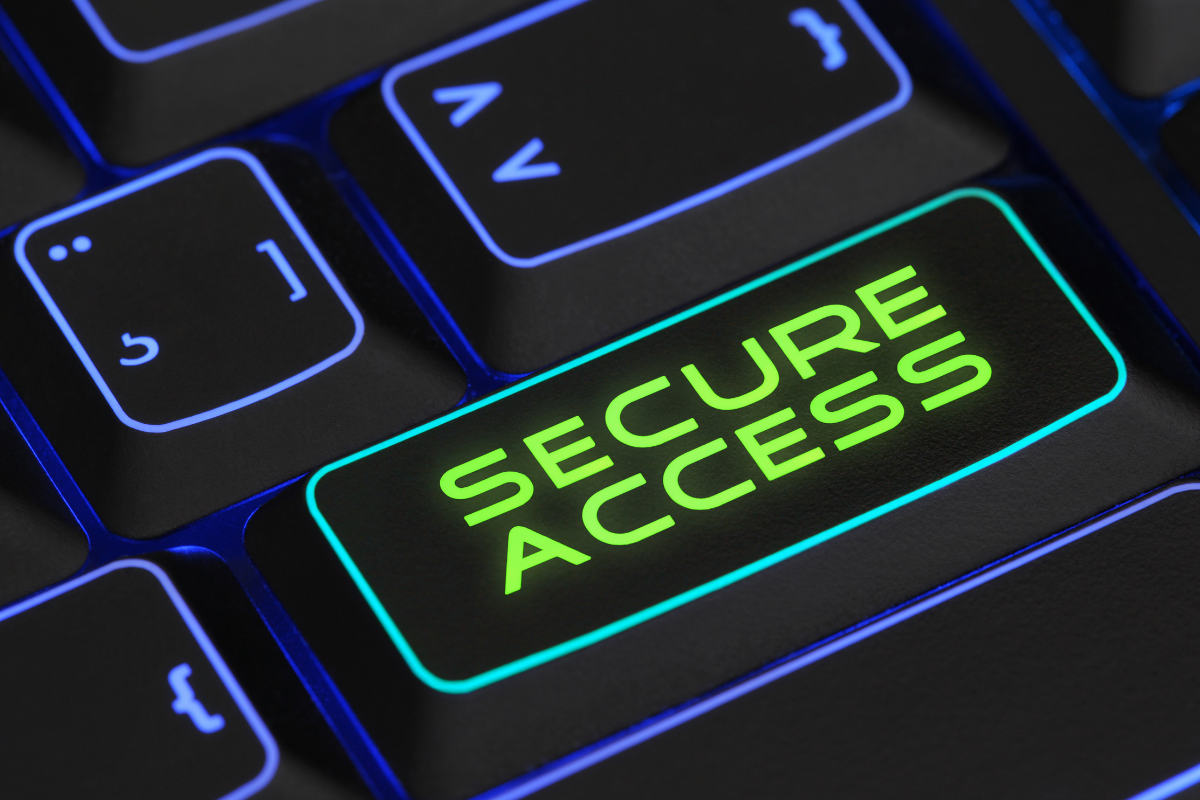Secure remote access is the process of “having location-agnostic connectivity among enterprise users and centralized applications, resources, and systems, whether cloud-based or on premises,” according to TechTarget Search Security. Examples of secure remote access technologies include VPNs (virtual private networks), intrusion prevention and detection systems, firewalls, virtual desktop infrastructure, and more. While your IT professionals or departments are in charge of creating and maintaining these technologies, everyone who is using these items bears some responsibility for ensuring the correct steps are taken to uphold the integrity of the system.
The explosion of remote work due to the coronavirus pandemic has drastically increased the demand for secure remote access. Giving your employees remote access to company files and servers creates a big risk. But since these remote work measures aren’t going anywhere anytime soon, let’s talk about some best practices for secure remote access.
Evaluate Your Tech Often
Since the remote work sector experienced unprecedented growth, the tools we used to try and help keep everything running smoothly were scaled up at that same pace. That means that the processes and technologies you have relied on for the last year or so are likely due for a checkup.
For example, VPNs were at the forefront of a lot of work-from-home transitions, but there are vulnerabilities that come with home computer systems and Wi-Fi networks that can affect the security of the entire network. If employees are using their personal or family computer or other devices, your company network is at risk based on the Internet practices of more than just your employee – their friends, family members, and children could have unknowingly accessed malware that now has the potential to affect your VPNs. This is just one shortcoming that will need to be addressed and eradicated as we move forward in the world of Work from Anywhere.
Update Password Policies
If your employees are changing their passwords every 90 days without being educated on how to create strong passwords, the frequent changes are only slightly improving your cybersecurity measures.
One of the best ways to improve secure remote access is to create a comprehensive password policy and make sure to educate your employees on this policy often.
You can also encourage the use of password managers. It’s much safer than leaving your employees to their own devices – devices that often include sticky notes with access information left in plain sight on their desk or in their home office. These and other great password-related best practices are outlined in our recent blog post, which you can read here.
Discourage the Use of Unsecured Devices and Networks
The most obvious way to provide secure remote access is to purchase and set up the networks, devices, and systems that your remote employees are using. But with the rise of freelance and independent work, as well as the financial and logistical needs of your individual business, it’s often not possible to provide everyone who works within your company’s networks with a secure device and network to perform their tasks on.
Instead, your IT department should be aware of what setup your employees are working from and offer tips, tricks, and (when possible) updated devices or networks to keep your workforce engaged in their role as integral pieces in your cybersecurity network.
Strengthen Backup and Recovery Systems
Assuming you have the correct measures in place is borrowing trouble that will hit home when you are in a breach situation. As important as preventative measures are, you also need to be prepared and well-equipped to handle the inevitable failures in your cybersecurity protocols. They say to err is human, and no amount of technology can anticipate every potential threat caused by your dedicated workforce.
It’s important to implement tailored backup and recovery systems and procedures to mitigate damage.
Train, Train, Train
In this culture of “life hacks” and “did you know…,” providing training is a great way to achieve secure remote access. You can do this by continuing to conduct thorough analyses of your company’s cybersecurity weak spots and offering or mandating short training sessions to help close information gaps. You can also create or host some great resources (helpful blog posts, online classes, instructional videos) on your intranet or in VPN files so your staff can peruse them when needed.
Training also includes setting an example by following your own protocols and emphasizing those actions as a leader in your own company.
Achieve Secure Remote Access with the Right Tools
Secure remote access is not going away when the current global crisis is over. The shift to remote work has been gaining popularity for years, and that means your business needs next-level solutions to help protect your networks and data.
CyberFort Advisors has a wide range of SOC services designed to meet your needs and close cybersecurity gaps. Contact us at 1 (866) 221-4004 or email info@cyberfortadvisors.com to learn more.

